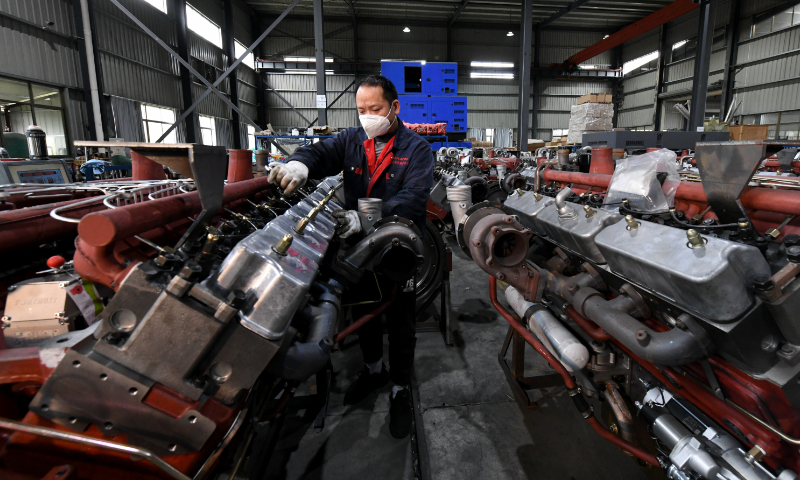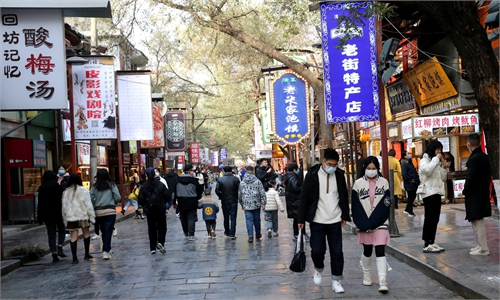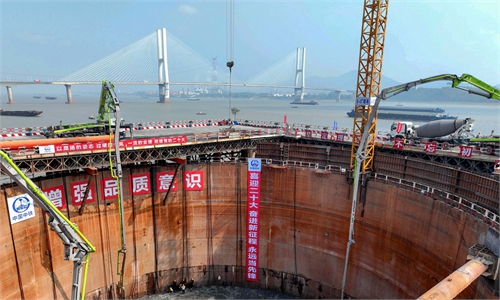China's economy maintains trend toward recovery in November; officials vow more support

Workers are busy making engines for overseas orders at a factory in Ningde, East China's Fujian Province on December 5, 2022. These products, such as diesel engines and generators, are exported to Europe, North America, Africa and Southeast Asian countries. Photo: cnsphoto
China's national economy has withstood multiple pressures from domestic and international factors beyond expectation of onlookers, sustaining recovery momentum and performing within the reasonable range, official data showed on Thursday.
The country's industrial output posted slower growth in November due to the impact of a COVID-19 resurgence, but has maintained overall stability over the first 11 months of the year.
According to data released by the National Bureau of Statistics (NBS), the country's industrial value added of the industrial enterprises above the designated size grew by 2.2 percent year-on-year in November, down 2.8 percentage points compared with the previous month. However, in the first 11 months, the total value added of those enterprises grew by 3.8 percent year-on-year, according to the NBS.
It's worth noting that new-energy and new momentum products maintained accelerated growth, underlying the resilience of the national economy. In November, production of new-energy vehicles (NEVs) increased by 60.5 percent year-on-year.
Impacted by a variety of factors including the pandemic, the consumer market faced significant pressure in November, but online sales remained resilient, with value added retail goods the star performers.
In November, the total retail sales of consumer goods came in at 3.86 trillion yuan ($555 billion), down 5.9 percent year-on-year, according to the NBS. The country's online retail sales of physical goods grew by 6.4 percent year-on-year in the first 11 months, accounting for 27.1 percent of the country's total retail sales.
In the first 11 months of the year, the country's investment in fixed assets (excluding rural households) reached 52 trillion yuan, up 5.3 percent year-on-year. Specifically, the investment in infrastructure grew by 8.9 percent year-on-year, investment in manufacturing grew by 9.3 percent and that in real estate development declined by 9.8 percent, according to data from the NBS.
In the first 11 months, the urban surveyed unemployment rate was 5.6 percent on average. In November, the urban surveyed unemployment rate was 5.7 percent, 0.2 percentage points higher than the previous month, according to the NBS.
The NBS vowed that the authorities will stick to the general principle of pursuing progress while maintaining stability, implement the new development philosophy in a complete, accurate and comprehensive manner, and accelerate efforts to foster a new development pattern and pursue high-quality development.
Efforts are also required to better coordinate epidemic prevention and control to meet the needs of economic and social development, it stressed, noting that comprehensively deepening reform and opening-up, boosting market confidence, and implementing policies and measures to stabilize the economy remained a priority.
Global Times



